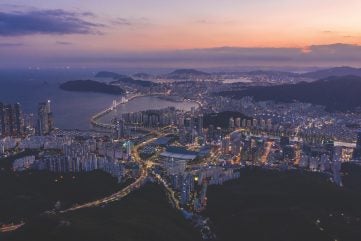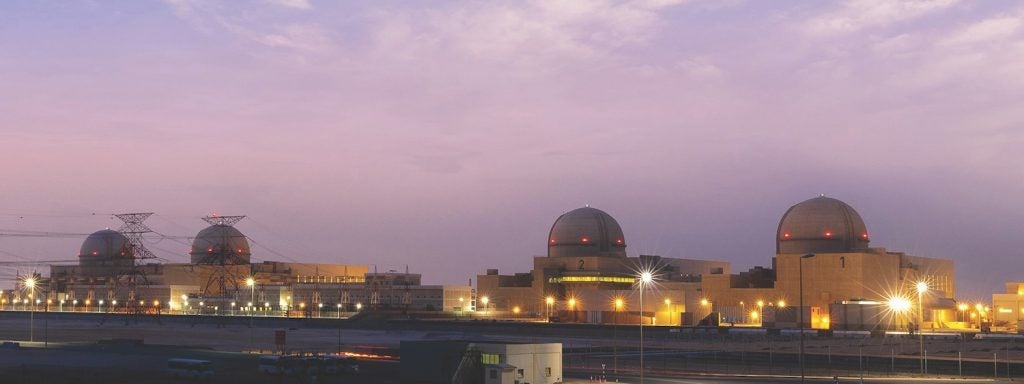
The 5th Cooperation in Reactor Design Evaluation and Licensing (CORDEL) Regional Workshop was held under the banner theme: Accelerating nuclear deployment through international cooperation and was designed to provide insights into how the entire nuclear sector, including governments, regulators, reactor vendors, and the supply chain, will have to develop and work together to support the necessary expansion of nuclear power, as well as the role that international organisations can play to support that growth.
Q: How can events like the CORDEL programme help nuclear growth goals to be achieved?
A: World Nuclear Association’s mission is to facilitate the growth of the nuclear sector, a key aspect of this is by connecting players across the value chain. So, events like the CORDEL workshop are vital forums for connecting and enabling international collaboration, bringing industry and regulators together to focus on goals and the barriers to achieve them.
In the context of the goal to triple global nuclear capacity, this requires a rapid increase in reactor deployment – an essential component of that rapid deployment is enhancing regulatory alignment to facilitate regulatory efficiency speed up the processes and increase certainty. Connecting industry and regulators helps to share knowledge and best practices, as well as fostering an enabling environment to new technology.
Q: The workshop will highlight lessons learned and best practices from the Barakah NPP project. Please outline some of the key approaches that illustrate best practice.
A: The Barakah project has been a huge success, going from initial policy for a reactor programme in 2009, to bringing four units online in 15 years. Once the 4th unit enters commercial operation (expected later this year), Barakah will be the 7th largest nuclear power plant in the world, providing up to 25% of the country’s electricity needs for the next 60 years. The key aspects that made this project a success are strong and committed leadership from government downwards, the meticulous planning phase to select the right technology, suppliers, and international partners, as well as broader international collaboration and knowledge transfer between national regulators and industry partners. While sticking with a proven design helped ensure a smooth regulatory compliance process. The wider project management, public engagement campaign, and developing a local skilled workforce and supply chain were important aspects too.
Q: How might those approaches be deployed in other regions and countries?
A: The first thing is having clear policy and vision with a strong committed leadership, like the UAE had to implement a nuclear power programme. Newcomer countries will need to seek support from each other and more experienced nuclear countries, international partners, and international organisations such as the IAEA– organisations like the World Nuclear Association can help facilitate connections with technology vendors and supply chain. Similar successful projects in newcomer countries are taking place in Turkey, Bangladesh, and Egypt.
In already nuclear established countries, but perhaps looking to utilise new technology, there is the example of collaborative relationship between the Canadian Nuclear Safety Commission (CNSC) and the US Nuclear Regulatory Commission (NRC), looking to share knowledge and streamline licensing of GE Hitachi’s BWRX-300 reactor design. Similarly, in Europe, the joint early review of NUWARD technology currently involves six national regulators.
Q: What other experiences from Barakah might benefit nuclear development elsewhere?
A: The public engagement and skills development was an area the UAE excelled in and was a key part of the project’s success, so others can learn from this. These are the foundations for a social license to operate nuclear facilities in any country and a clear socio-economic benefit to local people. The relationship between industry and regulator, which were both developing alongside each other and developed independent but close working relationships, was also important.
The UAE put young people at the heart of its plans, and by doing so are creating a generation, not just of nuclear engineers, but with all the necessary skills and roles required to run nuclear power projects.

Q: How else can the nuclear sector work together to establish a global supply chain?
A: On technical side, finding commonalties to achieve standardisation for large components like pressure vessels all the way down to the things like using the same pumps and valves. But on a grander scale having clear signals to invest in the supply chain. This often stems from individual countries energy policies and industrial strategies, but at the international level delivering a united voice for something like Net Zero Nuclear – that sets out a very clear goal to triple nuclear capacity – signals confidence to the supply chain to invest in itself because the demand will be there.
Q: What role can international organisations play to ensure their work is complementary?
A: World Nuclear Association Director General, Dr Sama Bilbao y Leon often uses the phrase “compete-mates” – Every company wants to run a successful business and needs to compete, because this is why they are in the industry, but it is important to recognise that we will succeed better together than we do separately. Other industries strategise together on how to make the most of any opportunities and defend against any threats that are coming their way.
This is where World Nuclear Association can help be the voice representing the entire global industry, by connecting the industry in these types of forums we can reach common viewpoints and then influence key decision makers.
In a keynote speech at the workshop, Bilbao y León, noted that to triple global nuclear capacity by 2050 – as the stated ambition under the industrial pledge made at COP28 – would mean building up to 1200 GWe in 25 years. Taking possible plant closures into account this could actually lead to building some 40 GWe per year for 25 years.
“To achieve this unprecedented expansion will require increased and targeted collaboration between regulatory bodies and increased support to emerging countries, to ensure that the nuclear industry remains the safest form of electricity production, while we minimise unnecessary duplicative efforts in regulatory reviews and move towards more standardised reactor deployment,” Bilbao y León said.
She pointed out that development at this scale is not just a regulatory challenge though, instead requiring the entire sector to rise to turn this momentum into energy and turn policy papers into concrete reactors, saying: “The ability of the nuclear industry to seize the opportunities of the current energy challenges will depend on several factors, including the capacity of the industry to build and equip hundreds, and potentially thousands, of nuclear power plants efficiently. This will require targeted sector collaboration and streamlined engagement with key enabling stakeholders”. She concluded: “We cannot accept that it takes 10 years to build a nuclear power plant, if we want to expand to other regions and countries, we have change this expectation”. Events like the CORDEL workshop are an important part of that collaborative approach needed to change expectations.






